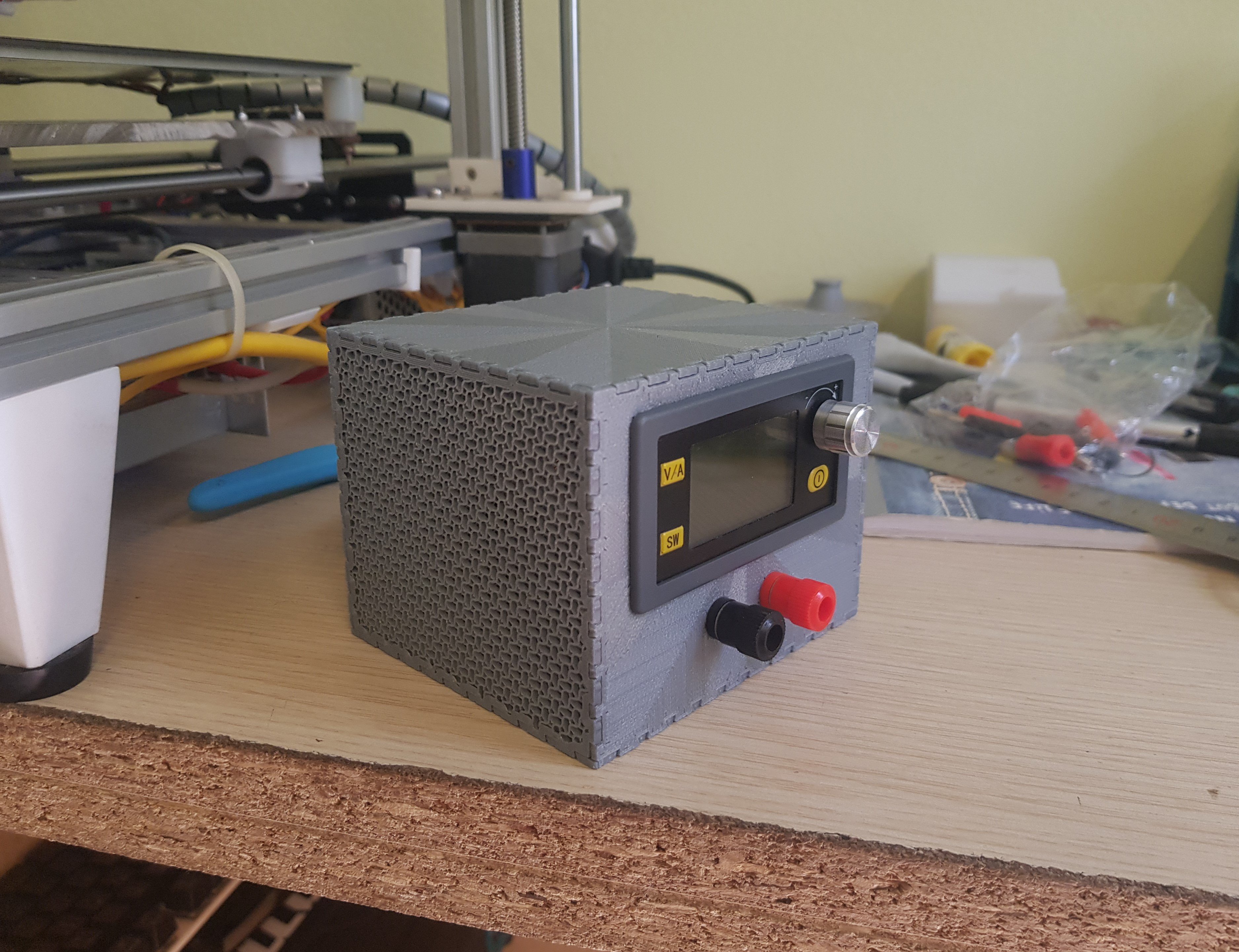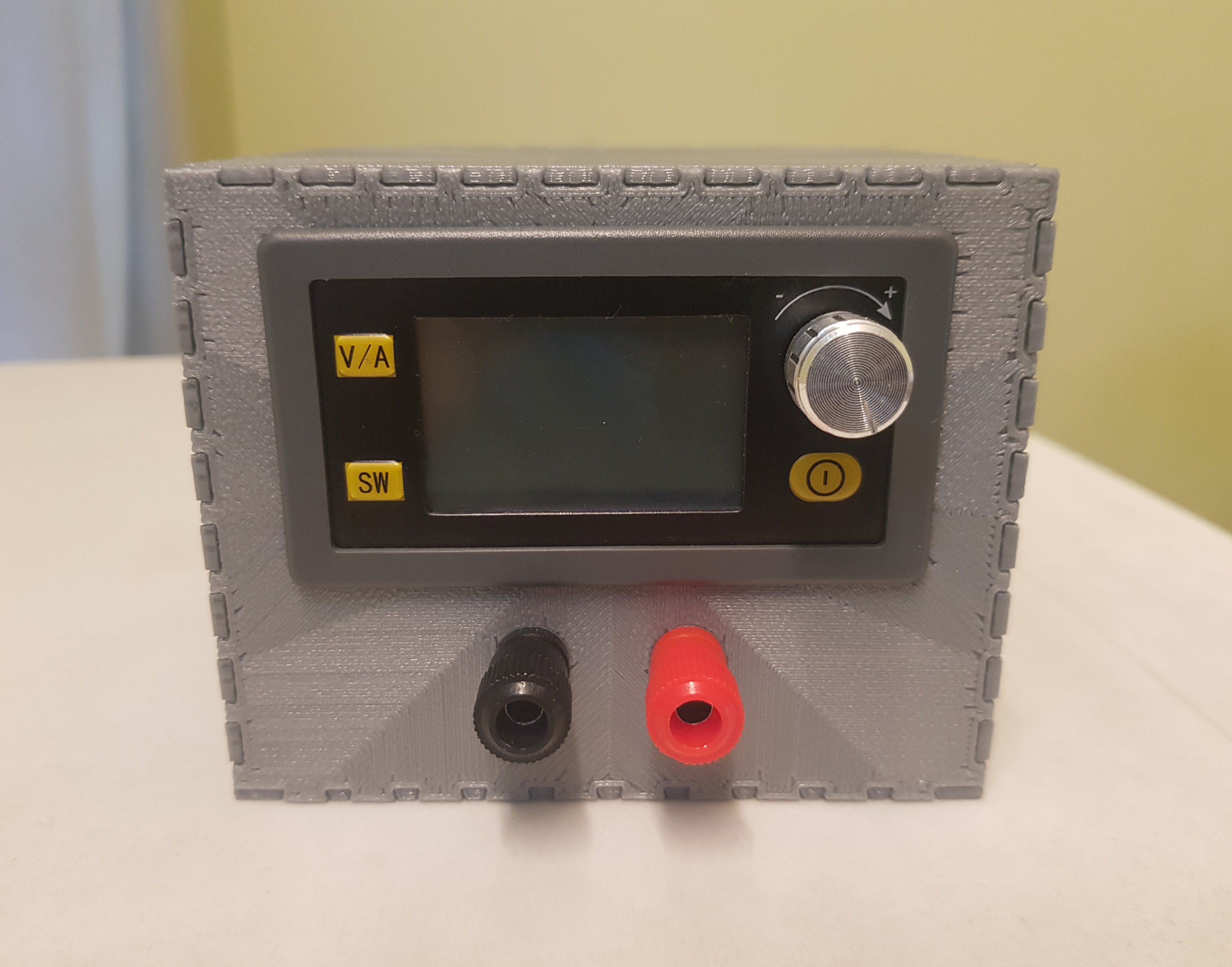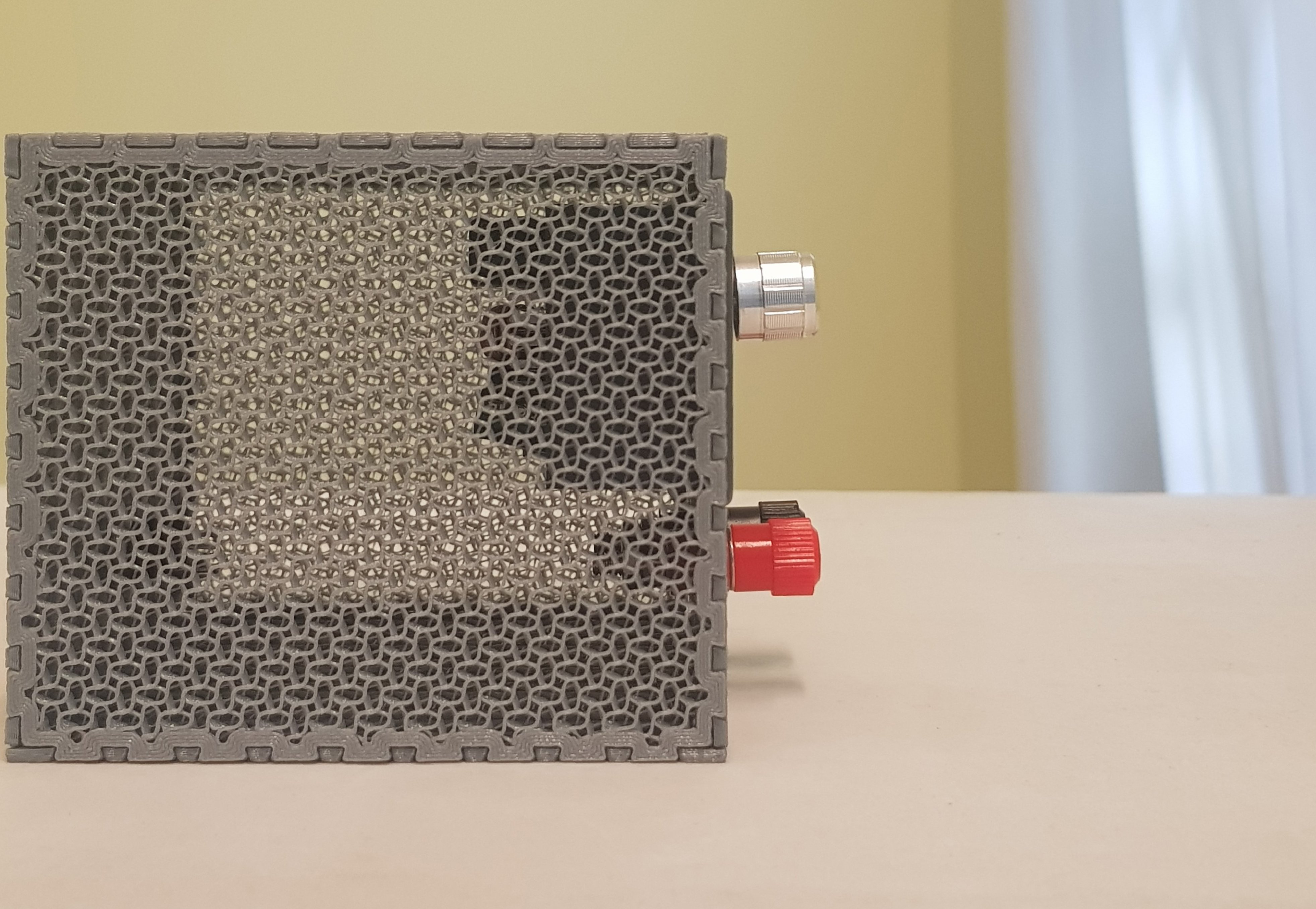It is held together completely by the joint. These dovetail joint are known to be very strong reliable.
x7tYnC6c
The interface module which do everything is just the cheapest one I found locally. It called a buck boost module but that doesn't really narrow it down. Other than that it's just 2 binding posts and whatever supply you want. I used a barrel jack plug to reuse my old laptop charger.
That's the neat thing! If passive convection can't do the job, I just have to print a new top plate with fan mount.
Not everyone cup-of-tea, but build123d/cadquery is pretty good if you like programming. I used it to make some dovetails joint which would be annoying to do with gui cad.
This is only a prototype, you can see there are no wiring inside. The artifacts are because I print at 150m/s and 5k acceleration, on a bed slinger.
While these changes will eventually happen, as all of these companies are meant to make a profit from the start. The reason they're all happening now is because of the coming recession, or at least the believe that it will come.
I tried .8 nozzle for a while, but my vanilla hot end just can't keep up at higher speed.
Yes. I'm certain it is a build quality problem. The probe is just plastic and by design hang freely. Even a steel rod with bearing can easily be deflected by a few tens of micron.
I meant the probe is deflected by the texture. Taking multiple sample is what I'm doing, yes. It take at least 5 samples for it to be reasonably smooth, which is why I'm asking other experience.
Nah it rock solid. The variance come from the texture itself.





Yes.